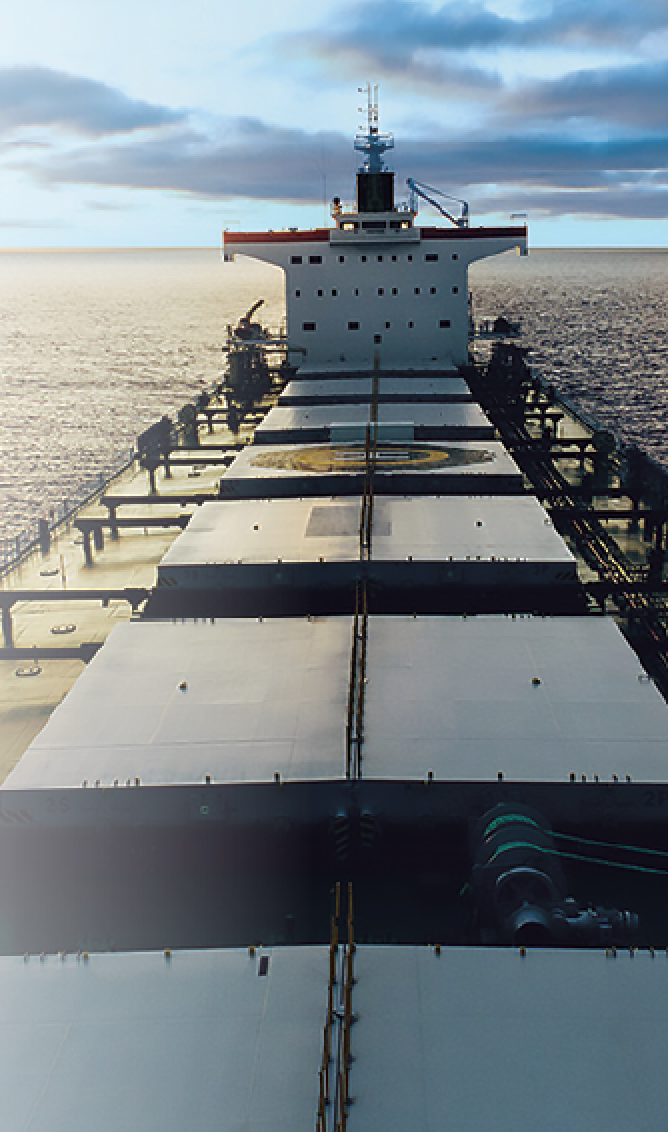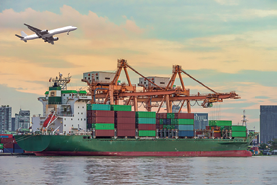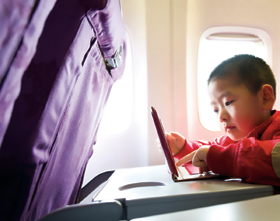Catherine Melquist (CM)
Andrew since you’re living and working in London, I need to first ask you about the weather. How is it today?

Andrew Faiola (AF)
One of the great things about living in London is that no matter how the weather is, you can be sure it is just about to change. We’ve had the warmest April day in 70 years, and are just about to receive a months’ worth of rain in one day. There is no such thing as bad weather, just bad clothing choices!

CM
Moving forward, I especially enjoyed the recent panel you moderated, “IoT on the Road: Connected Consumer Vehicles, OTT, and the Self-Driving Car”, with panelists from Kymeta, Globalstar, Strategy Analytics and Aptiv. As Intelsat’s Director of Mobility Solutions for EMEAAP, does the Connected Car and IoT program fall under your remit? What are your other priority areas of focus for the mobility business?
AF
From a sales standpoint, yes, it does. My responsibilities cover just about anything that requires a remote stabilized (or electronically steered) antenna for operations.
Maritime and Aeronautical are more mature, but we are starting to focus much more attention on Land Mobile — and that can be anything from the Connected Car to Rail to Agriculture — due to several technology innovations that are now making those segments possible to serve with broadband connectivity.
CM
Thinking back to the panel, what were your key take-aways from the discussion about IoT and the Connected Car and was there anything mentioned that surprised you?
AF
Both at the panel and over the course of the last year, I have been pleasantly surprised with the traction that satellite has gained in terms of acknowledgement that it must be part of the connectivity landscape for Connected Cars.
However, in the words of Arthur C. Clarke, “Any sufficiently advanced technology is indistinguishable from magic.” If we as an industry want to play a meaningful role in connecting the Connected Car, we need to integrate into the vehicle and with terrestrial networks seamlessly.
CM
One thing that interested me was the notion of cities becoming a new data customer for car companies. I believe it was Jada Tapley, from Aptiv, who suggested that data captured by connected cars could provide real-time traffic updates to cities that they could use to control traffic lights and flow patterns. And, in anticipation of this, Aptiv has purchased several data processing companies that are working on capturing and packaging data for potential new customers types.
Given MSUA’s focus on mobility market development, are you aware of other prospective new customer types coming from the connected car or other IoT applications?

AF
No matter what the platform, whether an automobile or other vehicle, they are generating masses of data like never before. This creates challenges as well as opportunities. As a communications industry we need to identify those companies who are working on ways to not only transfer data, but who also have the expertise to analyze it and act on the results.
CM
Also in reference to the connected car, Jada mentioned that different user groups (e.g.. Operators, Tier 1s, OEMs and Consumers) want to own different aspects of the end-to-end connected car system. For example, OEM’s want to own the “engine operations” and the “HMI (human machine interface) or customer experience”. What aspect of a connected car system does an operator, such as Intelsat, want to own?
AF
Traditionally, it has been other parts of the satellite industry that have been touching Connected Cars — GPS and satellite radio, and to a much lesser degree, narrowband L-Band services.
Now that satellite and antenna performance is increasing so rapidly, there is a real opportunity to package a hybrid connectivity solution for automobiles that incorporates GEO and LEO satellites, as well as terrestrial wireless, into a seamless, ubiquitous network so that vehicles are connected and have access to services wherever they are located.
CM
Let’s shift back to a broader view of market development. What other market segments do you believe are ripe for satellite mobility solutions and why?
AF
As I mentioned earlier, Maritime and Aeronautical are rapidly maturing, but there is still a lot of growth from both existing ships and aircraft, as well as new builds. However, in terms of greenfield opportunities, I am a firm believer that the correct hybrid network business model and lower-cost terminals can unlock tremendous near-term opportunities in rail and long-distance bus services, as well as agriculture and construction.
CM
Any emerging new or unique use cases for mobile satellite connectivity in the regions you oversee? Any new or unique challenges that stand out?

AF
Certainly in Europe as well as in parts of Asia, where train travel is much more prevalent than in many parts of the world. Many high-speed, long-distance services advertise WiFi, which is often provided free of charge.
It is typically free because the service is terrible. Augmenting terrestrial wireless with satellite would enable train operators to provide a new, much higher-quality level of service for their customers that would enable new business models to be exploited. But, certifying antennas for use on rail is no easy task, and those antennas must also be flat in order to fit under tunnels. Opportunities for certain, but numerous challenges remain to be overcome before this segment can be unlocked.
CM
What new innovations (e.g., LEO constellations, terminal innovations, data analytics and / or cybersecurity applications, etc.), are you most eager to see come to market with the hope of spurring new growth in the EMEAAP region?
AF
I’ve already mentioned a few, but I am looking forward to a trifecta of complementary technologies — broadband LEO systems to augment look angles in urban areas and northerly latitudes from OneWeb and others, truly cost-effective electronically steered antennas from Kymeta and others, and the bonding and aggregation technology to tie it altogether such as we are seeing from companies such as Dejero Labs.
CM
Andrew, you’ve worked for Intelsat and in the satellite industry for many years. How did you get involved in satellite and what’s your career path been?

AF
This may sound corny, but growing up in the Washington, DC area, one of my formative experiences was watching the nightly news updates for STS-49, the maiden voyage of the Space Shuttle Endeavour. This was the famous Intelsat 603 re-boost mission.
I’ve always been a bit of a space geek, but that pretty much sealed my desire to get into the aerospace industry. During grad school, I had a chance to intern at NASA, then wound up working for a start-up teleport operator where I was consulting for a number of first-wave LEO constellations, and then onto NewSkies Satellites, and now here I am at Intelsat.
CM
Careers in satellite tend to lead to interesting travel and people-meeting opportunities. Have you had a stand-out event or experience along the way?
AF
I think that this is one of the reasons why the satellite industry seems to have its own gravitational pull. Once you’re in, you’re in!
You are correct that there have been many opportunities to travel to weird and wonderful places and meet weird and wonderful people! One standout memory for me would be getting to experience a launch in Baikonur in the dead of winter. It’s hard to forget standing directly on the launch pad in -30C weather while a Russian Orthodox priest blessed the Proton rocket with holy water that froze before it hit the launch vehicle.
CM
My final signature question — also a personal one — what is your favorite form of recreational mobility when you’re not at work focused on satellite mobility?
AF
I like keeping mobile with my own two feet. I’m a fair-weather runner, and I’m not the fastest, but I do like to get out there. Over the past couple of years, I’ve started to try to travel around Europe for the odd 10K or half-marathon. There is a real buzz from soaking up the atmosphere, sights, and camaraderie of a race in a totally unfamiliar place.
CM
Andrew, it has been a pleasure to re-connect with you. Thank you for taking time to share your thoughts and perspectives.
President of the Mobile Satellite Users Association, Catherine spearheads the group’s mission to promote mobility market development and mobility innovation. With over 25 corporate and small business members representing all levels of the satellite value chain as well as end-users, MSUA collaborates with conference organizers around the world to facilitate panels and keynote speakers that decipher mobility market dynamics including: growth opportunities, strategic partnership, barriers to progress, application aspirations, adjacent market influences and more.

Catherine Melquist is a strategic marketer with more than two decades of experience developing marketing and public relations strategies for global companies in the satellite and space-based market.
www.msua.org

